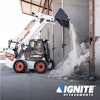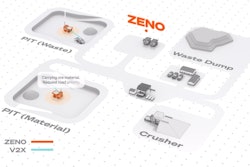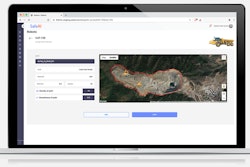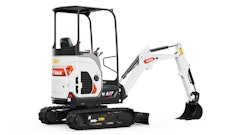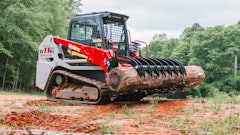
Doosan Bobcat is partnering with SafeAI, a Silicon Valley startup focused on applying artificial intelligence to heavy equipment, to explore incorporating AI technologies into Bobcat equipment. Through the pilot program, SafeAI plans to demonstrate how the latest AI technologies, Deep Neural Networks and Deep Reinforcement Learning, can be used to perceive complex dynamic environments around equipment and provide automated control.
“At SafeAI we are building a safe, AI-enabled autonomous platform for the equipment industry,” said Dr. Bibhrajit Halder, CEO and co-founder of SafeAI.
Autonomous haul trucks developed by Caterpillar, Komatsu and other manufacturers are already applying LIDAR and learning systems to pilot autonomous haul trucks in closed, relatively simple mine sites. Applying similar technology to far-more-dynamic environments where compact equipment normally works is the next frontier to bringing autonomous equipment to construction.
The partnership is part of Doosan Bobcat North America’s initiative to identify forward-looking solutions to help equipment owners and operators maximize their productivity.
“We live in an on-demand, highly connected world,” said Joel Honeyman, vice president of global innovation at Doosan Bobcat North America. “The customers who purchase our machines expect to have the latest and greatest technology at their fingertips. Through our partnership with SafeAI, we hope to work toward our ultimate goal of enabling our customers to work more efficiently on the jobsite.”
About SafeAI
SafeAI believes the equipment industry is on the cusp of fundamental change due to recent progress in autonomous and artificial intelligence technologies. The SafeAI platform intends to enable transformation in the industry by:
- Improving safety – assisting or removing people from hazardous environments
- Increasing productivity – greater equipment utilization and task optimization
- Reducing operation cost – implementing fleet management systems that orchestrate tasks and equipment
More on growth in construction robots:
- [VIDEO] Built Robotics Develops Autonomous Track Loader for Construction
- [VIDEO] Autonomous Rebar-Tying Robot Could Revolutionize Bridge Construction
- [VIDEO] Robotic Mason’s Production Rate More Than Doubles with Retooling
- [VIDEO] Ford’s Using Exoskeletons to Reduce Line-Worker Shoulder Injuries
- McCarthy Halves Work Time with Back-Saving Heavy-Tool Assist Gear
- Countdown to Human-Free Construction in Less Than 10 Year
- How Automation and Robotics Should Inspire Rethinking Construction Jobs

